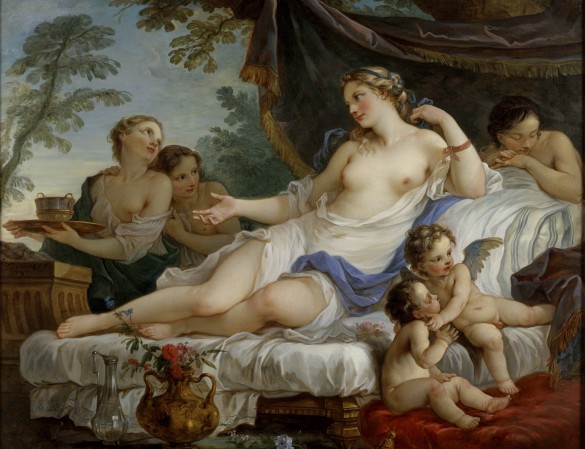
Charles Joseph Natoire (French, 1700 - 1777), The Awakening of Venus, 1741, oil on canvas, 38 ¾ x 49 ¼ in., Purchased with funds from the Morton R. Hirschberg Bequest and The Cummer Council, AP.1991.5.1.
By Angela Gonzalez, Curatorial Intern
This classically themed painting of The Awakening of Venus is the epitome of Charles Natoire French Rococo style. As a student at the French Royal Academy of Painting and Sculpture, Charles Natoire was awarded the coveted Grand Prix de Rome in 1721. After studying in Italy from 1723 to 1729, Natoire returned to France and was elected to membership in the Academy in 1734. Known for his expert draftsmanship and fine history paintings, Natoire executed numerous decorative commissions for the French royalty and nobility. Natoire returned to Rome in 1751 to serve as Director of the French Academy, a position he held until his retirement twenty-three years later.
Natoire’s representation of Venus is tranquil yet also erotic. Venus reclines on a feather bed as she carelessly allows the sheets to fall of her body. She holds her left hand up to her neck and gestures her right hand to her servants. The two female servants gaze at Venus, mesmerized by her flawless skin and beauty. Two putti interact together in the foreground as Venus’ attention remains on her own comfort.
Venus, Roman goddess of love, sex and beauty, is often portrayed in a seductive, sensual manner. The name “Venus” can also be given to a mortal woman as a conventional comparison to the beautiful, sexual god, Venus. Natoire’s graceful (and almost superficial) approach of the soft, voluptuous skin of Venus and the classical drapery that surrounds her is typical of the Rococo style. The Awakening of Venus is a playful, sensual painting filled with rich, creamy color and a spot-on representation of Venus.


